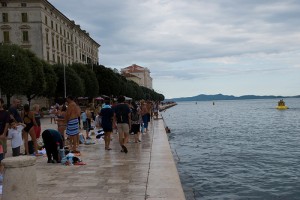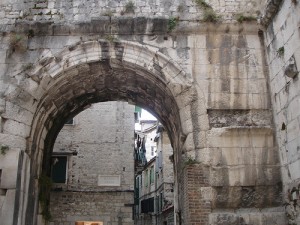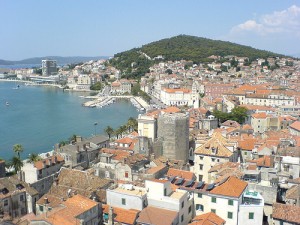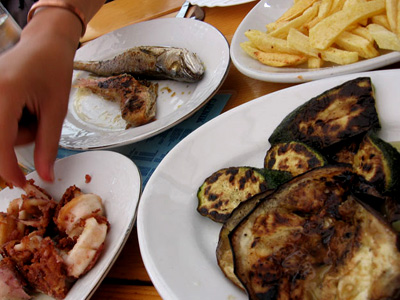 Split is famous for the Roman heritage. Even today, you can still see the old Roman walls, squares and temples.
Split is famous for the Roman heritage. Even today, you can still see the old Roman walls, squares and temples.
Zadar is located in northern Dalmatia and also has a Roman heritage. The old town is worth your time and so are the remains of the Roman Forum. During summer, spend some time on the beaches.
Although both cities are served by an airport, the short distance between them (160 km) doesn’t require a flight. You can fly via a connection in Zagreb, though , and the single fare starts at €240.
Quick summary
Generally speaking, buses tend to be cheaper than trains. And in this case, they are also faster.
Buses from Split to Zadar
You can catch a bus between Split and Zadar. There are 22 connections per day and you can find them here . Buses leave by the hour from 5 a.m. until 9:30 p.m. The travel time is about 2h 30 min. Some of the bus companies operating on this route are: Brioni, Autotrans Rijeka and Autotransport. Unfortunately, there is no pricing information available.
>>read more about Bus Travel in Croatia
Trains from Split to Zadar
The Split to Zadar connection is the only one which runs along the coast. The travel time is about 3 ½ h and there are 3 trains per day between the two cities. Trains depart split at 8:25 a.m., 2:41 p.m. and 9:18 p.m. On the way back, catch the trains from Zadar at 7:40 a.m., 2:30 p.m. and 8:30 p.m. You can check out the schedule here . Unfortunately, there is no pricing information available.
>>read more about Train Travel in Croatia
Driving from Split to Zadar
You can rent a car in Split and drive the 160 km to Zadar in about 2 hours (via A1/E65/E71). This route has tolls.


 Ask any of the locals in Split. Fife (FEE-fay) is the quintessential konoba in Dalmatia’s largest city. The word konoba means ‘cellar’ in Dalmatian dialect, and since many small taverns began operating in family wine cellars, the term is used also to refer to casual dining and drinking establishments where traditional home cooking is all you’ll find. At
Ask any of the locals in Split. Fife (FEE-fay) is the quintessential konoba in Dalmatia’s largest city. The word konoba means ‘cellar’ in Dalmatian dialect, and since many small taverns began operating in family wine cellars, the term is used also to refer to casual dining and drinking establishments where traditional home cooking is all you’ll find. At  Roman Emperor Diocletian probably didn’t know that building his retirement home on the coast of Croatia would spawn a town that would become one of the most populated and well-known in Croatia. The original structure around which the city of Split blossomed, Diocletian’s Palace is now the center of culture, business and nightlife in Split.
Roman Emperor Diocletian probably didn’t know that building his retirement home on the coast of Croatia would spawn a town that would become one of the most populated and well-known in Croatia. The original structure around which the city of Split blossomed, Diocletian’s Palace is now the center of culture, business and nightlife in Split.